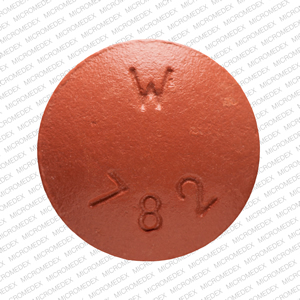Carbidopa / Entacapone / Levodopa Dosage
Medically reviewed by Drugs.com. Last updated on Oct 4, 2024.
Applies to the following strengths: 12.5 mg-200 mg-50 mg; 25 mg-200 mg-100 mg; 37.5 mg-200 mg-150 mg; 50 mg-200 mg-200 mg; 18.75 mg-200 mg-75 mg; 31.25 mg-200 mg-125 mg
Usual Adult Dose for:
Additional dosage information:
Usual Adult Dose for Parkinson's Disease
Converting from Carbidopa, Levodopa, and Entacapone:
- Switch to combination tablet that provides equivalent dose
Converting from Carbidopa and Levodopa:
- Patients with moderate to severe dyskinesias taking levodopa doses of 600 mg or more are likely to require a reduction in levodopa dose when entacapone is added
- Titrate patients to a dose using separate carbidopa/levodopa tablets plus entacapone, then switch to corresponding single combination tablet
- When less levodopa is required, reduce dose by either decreasing tablet strength or extending time between doses
Concomitant Administration with Other Anti-Parkinson Drugs:
- Dose adjustment of concomitant medications or this drug may be needed
MAXIMUM DAILY DOSE:
- Stalevo(R) 50, 75, 100, 125 and 150: Do not exceed 8 tablets in 24-hours
- Stalevo (R) 200: Do not exceed 6 tablets in 24-hours
Comments:
- Conversions from carbidopa/levodopa are based on carbidopa/levodopa products combined in a 1:4 ratio; there is no experience switching patients from products that are not combined in a 1:4 ratio or from extended-release formulations.
- Optimum dose should be determined by careful titration; therapy should be individualized and adjusted according to the desired therapeutic response.
Use: For the treatment of Parkinson's disease:
- As a substitute for equivalent strengths of each component;
- Or to replace carbidopa/levodopa therapy in patients experiencing signs and symptoms of end-of-dose "wearing-off" when the total daily dose of levodopa is 600 mg or less and dyskinesias are not present.
Renal Dose Adjustments
No adjustments recommended
Liver Dose Adjustments
Use with caution, especially in patients with biliary obstruction or hepatic disease
Dose Adjustments
Patients receiving less than 70 to 100 mg of carbidopa per day are more likely to experience nausea
Discontinuation or Interruption of Dosing:
- Abrupt withdrawal or interruption in dosing is not recommended
- Dose should be decreased slowly with careful observation
Precautions
CONTRAINDICATIONS:
- Concomitant, or within 14 days of taking a nonselective monoamine oxidase inhibitor such as phenelzine or tranylcypromine
- Narrow-angle glaucoma
Safety and efficacy have not been established in patients younger than 18 years.
Consult WARNINGS section for additional precautions.
Dialysis
Data not available
Other Comments
Administration advice:
- Take orally with or without food (high-fat, high-calorie meals may delay levodopa absorption by up to 2 hours)
- Swallow whole; do not split, crush, or chew tablets
- Only 1 tablet should be administered at each dosing interval; using multiple tablets to achieve dose is not advised
General:
- Each combination tablet contains carbidopa-levodopa in a 1:4 ratio and entacapone 200 mg; the numerical suffix on the product name is representative of the amount of levodopa in the tablet.
- Peripheral dopa decarboxylase is saturated by carbidopa at approximately 70 to 100 mg per day; a daily dose less than 70 to 100 mg per day may result in nausea and vomiting.
Monitoring:
- Monitor for melanomas; ideally, periodic skin exams should be performed by appropriately qualified individuals, such as a dermatologist
- Monitor for weight loss in patients with diarrhea
- Monitor for drowsiness or sleepiness; ask specifically when these episodes occur
- Monitor for development of depression with concomitant suicidal tendencies
- Monitor for impulse control and/or compulsive behaviors; ask directed questions
- Monitor patient closely upon therapy discontinuation or interruption
- Periodically monitor liver function in patients on long-term therapy
Patient advice:
- Patients should be advised to take a single tablet at each dosing interval, multiple tablets should not be taken to achieve a higher dose.
- Patients should understand that this medication may cause a dark coloration of saliva, urine, or sweat; this coloration is clinically insignificant.
- Patients should be advised that falling asleep during activities of daily living, including driving, have been reported. Patients should report sedating effects to their healthcare provider and speak to their healthcare provider before using alcohol or other sedating medications.
- Patients should be advised that this drug may cause syncope, new or worsening dyskinesias, hallucinations, depression, and impulse control and/or compulsive behaviors; they should speak with their healthcare provider if these develop.
- Patients should be advised to report nausea, vomiting, or diarrhea, especially if persistent; and myalgias, especially if associated with fever and confusion.
- Patients should be advised not to stop taking medication abruptly.
- Patients should notify their healthcare provider if they become pregnant or intend to become pregnant, or are breastfeeding.
More about carbidopa / entacapone / levodopa
- Check interactions
- Compare alternatives
- Pricing & coupons
- Reviews (10)
- Drug images
- Side effects
- During pregnancy
- Drug class: dopaminergic antiparkinsonism agents
- En español
Patient resources
- Carbidopa, entacapone, and levodopa drug information
- Carbidopa, entacapone, and levodopa (Advanced Reading)
- Levodopa, Carbidopa, and Entacapone
Other brands
Stalevo, Stalevo 100, Stalevo 150, Stalevo 50, ... +3 more
Professional resources
Other brands
Related treatment guides
See also:
Further information
Always consult your healthcare provider to ensure the information displayed on this page applies to your personal circumstances.


